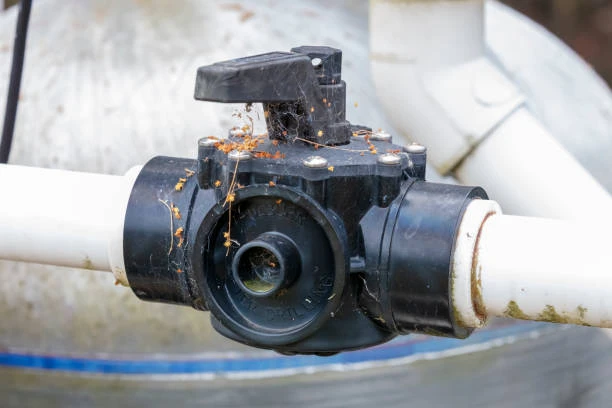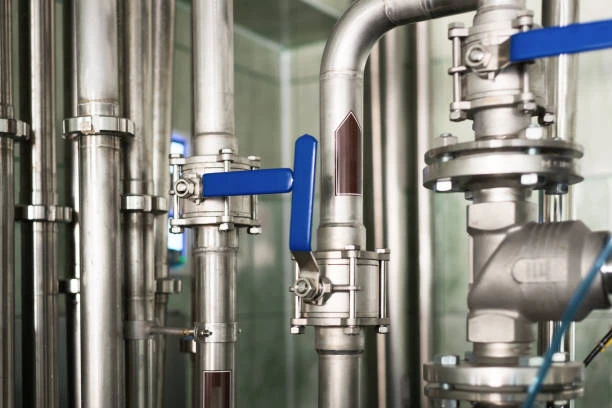Mumbai, the financial capital of India, is no stranger to water supply challenges. The city, with its dense population and heavy industrialization, frequently faces water shortages, especially during the summer months. Recently, the city experienced a significant disruption in its water supply, caused by the breakdown of a key supply valve. This incident has raised concerns about the reliability of Mumbai’s water infrastructure and how the breakdown of such a crucial component can affect daily life. In this article, we will explore the issue in detail, how the supply valve failure impacts residents, and what actions are being taken to address the crisis.
What Happened in Mumbai?
In early October, Mumbai residents were informed of a water cut across multiple localities due to the breakdown of a crucial supply valve. The valve, located at one of the city’s primary water distribution points, is responsible for regulating the flow of water to several neighborhoods in the central and southern parts of the city. As a result of the failure, water supply to several areas was either drastically reduced or entirely halted for a few days.
The breakdown occurred during a period when demand for water was already high, due to a combination of seasonal factors and increased consumption. The malfunctioning valve not only exacerbated the existing pressure on Mumbai’s water system but also left many residents struggling to cope with the disruption.
What is a Supply Valve and Why Is It So Important?
A supply valve is a crucial component in any water distribution system. It is responsible for controlling and regulating the flow of water from the main supply line into different parts of the city. The valve helps maintain the right pressure, ensures an even distribution of water, and prevents issues such as overflows or blockages in the system.
In Mumbai’s case, the supply valve in question is located at one of the city’s primary water distribution hubs. Which supplies water to major areas such as Dadar, Worli, and parts of South Mumbai. When this valve breaks down or malfunctions. Which it causes a ripple effect, impacting millions of residents who depend on this water supply for daily activities.
In large metropolitan areas like Mumbai, water supply systems are highly complex, with multiple interlinked valves, pipelines, and reservoirs. A failure in one valve can lead to cascading problems, disrupting water supply to large portions of the city.

Impact of the Water Cut
1. Reduced Water Availability
The immediate effect of the supply valve breakdown was the reduction in water availability to several neighborhoods. In some areas, residents reported that the water flow was reduced to a trickle. Which making it difficult to perform everyday tasks such as cooking, cleaning, and bathing. In other parts of the city, water was cut off completely. Which forcing people to rely on alternate sources, such as tankers or water from nearby wells.
2. Impact on Local Businesses
Local businesses, particularly those in the hospitality, manufacturing, and retail sectors, were among the hardest hit. Restaurants, cafes, and hotels faced operational challenges due to a lack of water for cooking, cleaning, and sanitation. Similarly, factories and small-scale industries experienced disruptions, as water is an essential component of many industrial processes.
For businesses in the affected areas, this water cut meant additional costs in sourcing water from alternate means, as well as potential loss of revenue. For many, this disruption also led to delays in service delivery, which hurt customer satisfaction.
3. Health Concerns
With a reduced water supply, concerns about hygiene and sanitation grew. Poor water quality and inadequate sanitation facilities can lead to the spread of diseases, particularly in densely populated areas. A lack of water for personal hygiene can increase the risk of waterborne diseases, further straining Mumbai’s public health systems.
Additionally, with the absence of regular water flow, many residents turned to informal water sources, such as private water tankers. However, the quality and safety of this water remain a major concern. As the water may not meet the required standards for potable use.
4. Impact on Public Infrastructure
Public infrastructure such as schools, hospitals, and government offices also experienced difficulties due to the water cut. In Mumbai, where the population density is extremely high, these institutions rely heavily on a steady and reliable water supply. The lack of water meant that many schools were forced to close or operate with limited hours. And hospitals struggled to provide basic care to patients.
When Will the Water Supply be Restored?
According to municipal authorities, the repair work on the damaged supply valve is expected to take several days. Officials have indicated that the situation will be resolved in stages, with some areas likely to receive water first. While others may experience delays.
In the meantime, the Brihanmumbai Municipal Corporation (BMC) has arranged for water tankers to supply affected areas, though this is typically seen as a temporary solution. The BMC has also called for residents to limit their water usage during the repair period to reduce the strain on the remaining working parts of the system.
What Measures Are Being Taken to Prevent Future Incidents?
The breakdown of the supply valve in Mumbai has brought attention to the broader issue of infrastructure maintenance in the city. Despite being one of India’s wealthiest cities, Mumbai has long struggled with outdated and often fragile infrastructure. Over time, the growing population, coupled with climate change and increasing water demand, has placed immense pressure on the city’s water systems.
1. Regular Maintenance and Upgrades
In response to the recent water cut, authorities have promised to ramp up efforts to maintain and upgrade critical infrastructure. This includes replacing or repairing aging valves and pipelines to prevent similar incidents in the future. The BMC has already initiated discussions about investing in more advanced valve systems. Which will be more durable and less prone to failure.
2. Increased Monitoring and Technology Integration
The BMC is also looking at integrating more technology into the city’s water distribution network. This includes the use of sensors and digital monitoring systems to detect leaks or malfunctions in the system before they escalate into major issues. By using real-time data, authorities hope to reduce the time it takes to identify and address potential problems.
3. Public Awareness Campaigns
As part of the efforts to manage water scarcity and ensure equitable distribution. Athe BMC has launched public awareness campaigns encouraging responsible water usage. These campaigns focus on the importance of water conservation and the need for residents to report leaks or inefficiencies in the water supply system.
Conclusion
The breakdown of the supply valve in Mumbai serves as a stark reminder of the fragile state of the city’s water infrastructure. While temporary solutions such as water tankers have been put in place, the long-term solution lies in regular maintenance, upgrades, and the use of advanced technology to monitor and manage the system. The incident also underscores the need for greater awareness around water conservation, as the city continues to face increasing pressure from population growth, climate change, and industrial demands.
Residents and businesses alike are hoping for a swift resolution to the current crisis, and for authorities to implement stronger measures to safeguard against similar disruptions in the future. As the repair work continues, the focus will shift to ensuring that Mumbai’s water systems are more resilient, sustainable, and capable of meeting the needs of its millions of inhabitants.
Frequently Asked Questions (FAQ)
- Why did the water supply valve break down in Mumbai?
- The breakdown was caused by a malfunction in one of the key supply valves that regulates water flow to several neighborhoods. The exact cause is still under investigation. But it may be due to wear and tear on the system or external factors like pressure fluctuations.
- How long will the water cut last?
- The repair work on the supply valve is expected to take several days. With water supply gradually being restored in stages. Residents are advised to conserve water during this period.
- What are the alternatives for water during the supply cut?
- The Brihanmumbai Municipal Corporation (BMC) has arranged for water tankers to supply affected areas. However, this is a temporary solution, and residents are encouraged to use water judiciously.
- How can I help conserve water during the shortage?
- You can conserve water by reducing non-essential usage. Such as limiting the time spent washing clothes or using water for landscaping. You can also report leaks or wastage to local authorities.
- What is being done to prevent future water supply issues?
- The BMC is working on upgrading the city’s water infrastructure. Which including replacing old supply valves and integrating new monitoring technologies to prevent future disruptions.


















